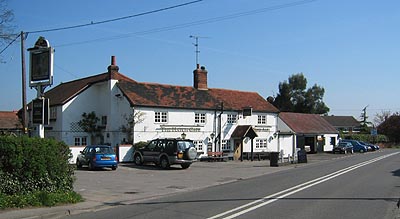 |
 |
||||||||
|
|
 Burghfield BurghfieldMonuments Ancient & Medieval The name Burghfield is Anglo-Saxon for Hill Field. The village is built on the lower slopes of Burghfield Hill, but the name could also refer to a prominent Bronze Age burial barrow like the one discovered on Burghfield Golf Course. From pre-Conquest times, the parish was divided into three manors: Burghfield Regis, Burghfield Abbas and Sheffield. Burghfield Abbas was owned by Reading Abbey. The manor house was at Burghfield Place. Burghfield Regis was the main manor. Its manor house, known as Nether Court, stood on the site now occupied by the Old Rectory. In the time of King Edward the Confessor, it was owned by his mother, Queen Emma. It was one of the nine manors which she eventually gave to Winchester Old Minster (or Cathedral), supposedly in thanks for successfully passing through an ordeal by fire. This had proved her innocence when accused of having an affair with the bishop. It eventually came into the hands of King Edward IV, who gave the manor its royal title of Regis. The effective lords of the manors were the under-tenants, the De Burghfield family. Sir Roger de Burghfield of Burghfield Regis was its most prominent member. A Member of Parliament for Berkshire in 1301, he was long remembered as a patron of Burghfield Bridge. However, he is best known locally for his superb wooden effigy displayed in the parish church. This was, unfortunately, stolen in 1978, but was later recognised in an antiques' market and repurchased. Burghfield Parish Church was entirely rebuilt in 1843 in an extraordinary Romanesque-cum-Italian Renaissance style. There are two further important effigial monuments inside. In the porch are the stone figures of Richard Neville, 5th Earl of Salisbury, and an earlier Montacute Countess of Salisbury. You can easily imagine their original magnificence, for painted colours survive on the Earl's tabard. He was the father of the great 'Warwick the Kingmaker' and was executed after the Battle of Wakefield during the Wars of the Roses. It is not known why the two effigies are preserved at Burghfield, for these two characters were buried at Bisham Abbey, at the eastern end of the county, and it was there that their monuments must originally have stood. Another survival from the old church is the memorial brass to Nicholas Williams (died 1568) and his two wives. Sir John Williams had married Elizabeth Moore, a Burghfield heiress, around 1495. Their second son, also John, was prominent at the royal court and he purchased Burghfield Abbas after the Dissolution of the Monasteries. He was later made Lord Williams of Thame in Oxfordshire. His main residence was nearby Rycote Palace but he may have also sometimes stayed at Burghfield. Williams' estates were inherited by his daughter, Margery, and her husband, Henry, Lord Norreys of Rycote. It was Henry who granted Burghfield to his wife's cousin, Nicholas, who appears on the brass. Read more history of Burghfield and other nearby settlements, like Pingewood, Burghfield Bridge, Sheffield Bottom & Burghfield Common, in David Nash Ford's book, 'Mid-Berkshire Town and Village Histories'. Click to Order direct from the Author.
|
||||||||
| © Nash Ford Publishing 2004; Revised 2020. All Rights Reserved. | |||||||||




